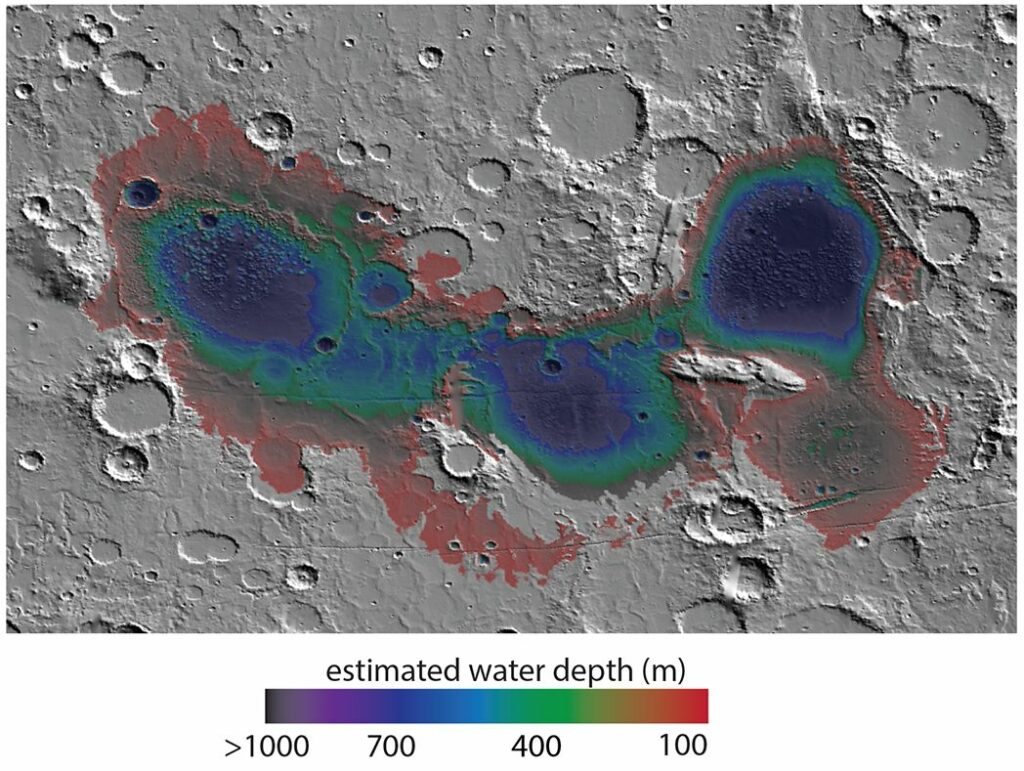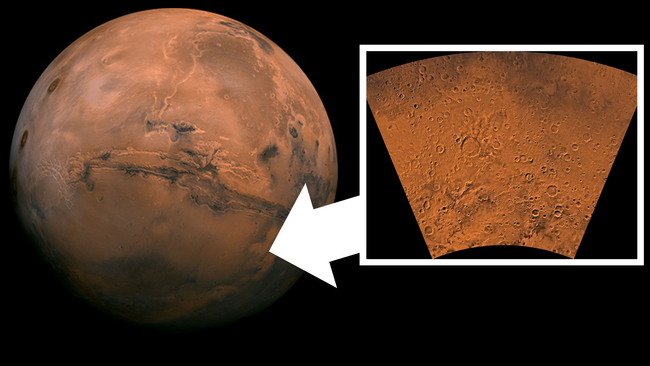It is possible that life on Mars flourished in close proximity to active volcanoes and a prehistoric lake that was a mile deep.
These findings, at the very least, provide us with a greater range of locations where we can search for signs of life.
63 new examples of various volcanoes have been discovered in a peculiar region of Mars, indicating that early Mars may have been more tectonically and volcanically active than previously believed. This tectonic activity, which occurred around 4 billion years ago, provides evidence of changes within Mars’ crust rather than external forces. The Eridania region, located in the southern hemisphere of Mars, is believed to have been shaped by these internal changes. This significant finding could have implications for the ongoing search for signs of ancient life on Mars by NASA’s Curiosity and Perseverance rovers. The presence of long-lasting volcanic sources near abundant water suggests the possibility of hydrothermal systems that could have supported life.
These findings provide us with a greater number of locations to search for signs of life, at the very least. Unlike the present-day Earth, Mars lacks significant volcanic or tectonic activity. Furthermore, due to the fact that approximately half of Mars’ surface is estimated to be older than 3.5 billion years, it suggests that there has been limited crustal recycling on the planet.
On Earth, crustal recycling occurs through plate tectonics, where one tectonic plate slides beneath another, resulting in the recycling of surface material into the mantle between the Earth’s crust and its molten core.
The research team conducted a study on the morphology and mineralogy of the Eridania region in the southern hemisphere of Mars. They utilized data from various spacecraft orbiting the Red Planet, including the Mars Global Surveyor, Mars Odyssey, and the Mars Reconnaissance Orbiter.
“The Eridania region has attracted special attention due to several distinctive attributes,” Cowart explained. “Gamma-ray spectroscopy has revealed that this region possesses a unique composition in terms of its crust, gravity data indicates that it is generally less dense and thicker than the rest of Mars’ crust, and magnetic data shows that it has an intense magnetic field.”
Through their research, they discovered 63 instances of previously unknown volcanic activity, encompassing four different types of volcanoes: volcanic domes, stratovolcanoes, pyroclastic shields, and caldera complexes.

The team has reason to believe that there are numerous additional instances of volcanic activity within the Eridania region, which are remnants of intense geological events that occurred on Mars approximately 3.5 billion years ago. Furthermore, they speculate that the volcanic characteristics observed in this particular area may also be present in other regions across the Martian surface.
Tectonic activity gave early Mars a lift
The geological activity observed on Mars is characterized by vertical tectonics, where the land undergoes upward shifts resulting in uplift and subsidence. This particular type of activity served as a precursor to the plate tectonics that exist on Earth today.
According to Cowart, the changes in the crust that led to the formation of these newly discovered volcanic features on Mars are similar to a significant step taken by Earth over 2.5 billion years ago in its evolutionary journey towards plate tectonics.
Before the development of plate tectonics, recycling the crust back into the mantle was challenging due to the uniform composition of the crust, its rigidity, and its buoyancy relative to the mantle. However, the gradual incorporation of water in the deeper layers of the crust initiated mineral transformations that increased the density of the deep crust.
Cowart explained that once a sufficient portion of Earth’s lower crust had undergone these mineral transformations, it started to sag downwards into the mantle, a process known as ‘sagduction.’ This movement caused water-rich minerals, which had formed near the Earth’s surface, to be pushed deeper into the crust, contributing to the formation of buoyant magmas. The buoyancy of these magmas led to the upward movement of other regions of the crust.
Consequently, the landscape exhibited large basins where the crust sagged, mountain chains where the crust rose, and volcanic rocks with a higher silica content compared to rocks originating from the mantle.
Cowart expressed excitement about the Eridania region, as it showcases a landscape heavily influenced by pre-plate tectonic processes. Our understanding of these processes on Earth is often derived from ancient rocks that have undergone significant erosion and are overlaid by later plate tectonic activity, or from modern settings where plate tectonic dynamics play a role.
Not only does the newly discovered geology of Mars present an opportunity to study a period in Earth’s history that is not accessible in our planet’s geological record, but it also has the potential to shed light on the emergence of life on Earth.
This is because the processes responsible for these geological features on Mars could closely resemble scenarios involving the origins of life, where living organisms emerge around hydrothermal vents that release heated seawater filled with minerals through cracks in the ocean crust.
The magnitude of activity in this region is truly astonishing to contemplate. Mars has a tendency to exhibit everything on a grand scale, and witnessing a landscape of nearly the size of Europe or Arabia shaped by a complex interplay of tectonic processes in such intricate detail is truly remarkable,” Cowart concluded. “Observing a Martian landscape shaped by these processes and preserved in a state of stasis presents us with a remarkable opportunity to delve deeper into the evolution of planetary landscapes.”.
The team’s research was published on Monday (Feb. 12) in the journal Nature.
Do not forget to share your opinion with us to provide you with the best posts !





0 Comments